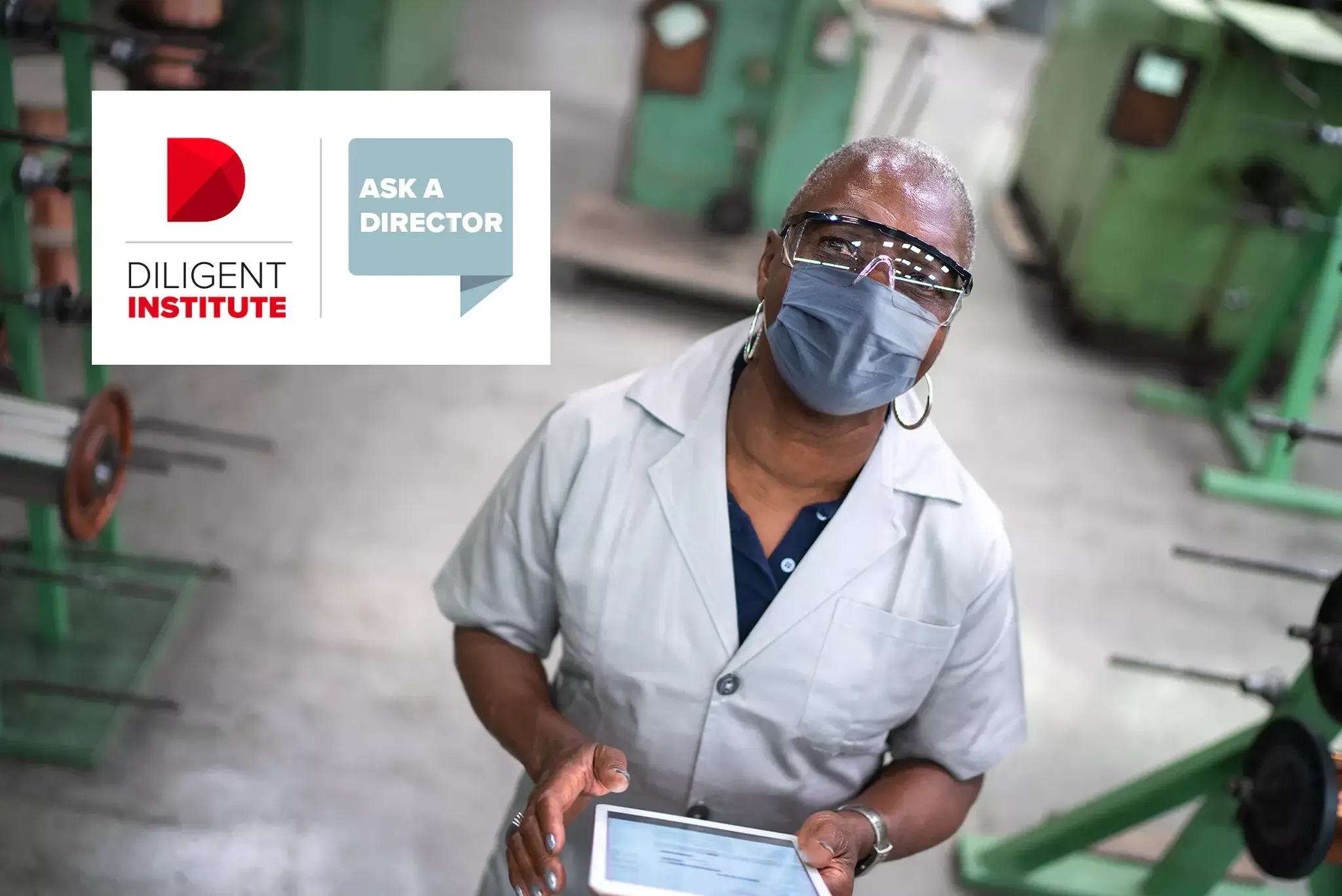How COVID-19 changed risk management and strategic planning

Diligent Institute conducted extensive interviews with over two dozen experienced directors from different sectors, geographies, and backgrounds on how modern governance practices and behaviors are changing in response to the pandemic and its impact, which boardroom changes might be permanent, and directors’ most important lessons learned. This second segment provides a compilation of director responses to questions about the pandemic and what it means for modern governance going forward, specifically relating to the future of risk management and strategic planning. Read the full report here.
How Has COVID-19 Changed the Future of Risk Management and Strategic Planning?
No board director could have successfully predicted the magnitude of the COVID-19 crisis. However, unprecedented side effects of the pandemic have forced directors to focus on how risk management and strategic planning are evolving in a world that changes pace at the blink of an eye.
Panelists:
- Phyllis Campbell: JPMorgan Chase & Co. (Pacific Northwest), SanMar, US-Japan Council, and Allen Institute
- Anna Catalano: Willis Towers Watson, Kraton Corporation, HollyFrontier Corporation, Frontdoor, Inc., and Appvion
- Rajive Johri: ConAgra Brands
- Brad Neilley: Princeton International Technology
- Mohamed Radwan: Platinum Partners
- Sonia Villalobos: Telefonica Vivo, LATAM Airlines, and EcoRodovias
- Danesh Varma: Anglesey Mining plc, Buchans Resources Inc., Canadian Manganese Corporation, Minco Exploration plc., Xtierra, Brookfield Investment Corporation, Crowd For Angels and Nine Point Senior Credit Fund
- Donna Wells: Mitek Systems (MITK), Apex Technologies (APXT), Betterment and Happy Money
Changing Risk Matrices and New Elements of Operational Risk
The scale and scope of the pandemic has changed how directors are thinking about operational risks and risk matrices.
“Many of the risk matrices we had looked at as a board were not useful when the pandemic hit. We had not planned, even nonspecifically, for a situation in which we did not have access to our employees. Specifically, regarding risk matrices, older, more experienced directors tend to make the boards focused on old risks, which are basically operational: What will happen if a platform explodes? What will happen if trucks stop working? The risks of today are completely different.” -Sonia Villalobos
“It was paramount for us to activate the role of the risk committee and reevaluate how that committee is functioning and doing risk management assessments. The pandemic hit us the hardest when we looked at how we used to evaluate and mitigate risk. Our risk matrix will be changed forever because of COVID-19. It shined a light on the fact that our old risk management processes had not filtered down all the way through the organization.” -Mohamed Radwan
“People are going to take business continuity exercises much more seriously in the future. We now understand, at a visceral level, how much more fragile our strategic and operating landscape has become over the past 20+ years. We’re living the impact that social justice issues, public health issues, climate change issues, and more, can have on shareholder value. Boards are expanding their oversight of these potentially existential threats … and demanding more management focus … than they were before the pandemic hit.” -Donna Wells
Supply-Chain Issues Exposed
The pandemic also illustrated the extent of supply-chain gaps around the globe and how disasters like COVID-19 can quickly and drastically interrupt businesses even when one supply location is compromised.
“Whichever administration succeeds this one in the United States, they will both follow the direction of focusing internally on America, especially after COVID-19. It has made the vulnerability of American supply chains more exposed. When the pandemic hit, we had no masks and no ventilators because nothing is manufactured here. This will not be forgotten anytime soon, and it will bring an emphasis on self-reliance and taking care of Americans first.” -Rajive Johri
Cyber Risk Looms Ever Closer
Virtual meetings and moving entire workforces to conduct business remotely have made many directors realize they need to do more to keep up with technological disruption and cybersecurity as risk factors.
“We had not looked enough at cybersecurity, which became a much greater risk with everyone working from home. It also showed me that many of the kinds of people on boards today are no longer the best people to manage current risk horizons. Eighty to ninety percent of board members are out of their depth with cybersecurity.” -Sonia Villalobos
Public Health Concerns Come to the Forefront
A public health crisis as extensive as that of COVID-19 has shown directors that, as a result of our global and interconnected society, steps must be taken to mitigate public health risk in the corporate world.
“Virtual meetings will be good moving forward. The overlay here is public health. The average person and business are ill-equipped to know what to do going forward. Part of risk management has to include having a medical advisory or public health board. Hygiene is now a CEO-level matter from the First Aid Room, just like cybersecurity from the IT department earlier.” -Danesh Varma
>>Continue to Part 6 of 7: What Response to COVID-19 Makes You the Proudest of Your Organization?
>>Return to Part 4: Boardroom Culture and Onboarding New Directors
>>Return to Diligent Institute.